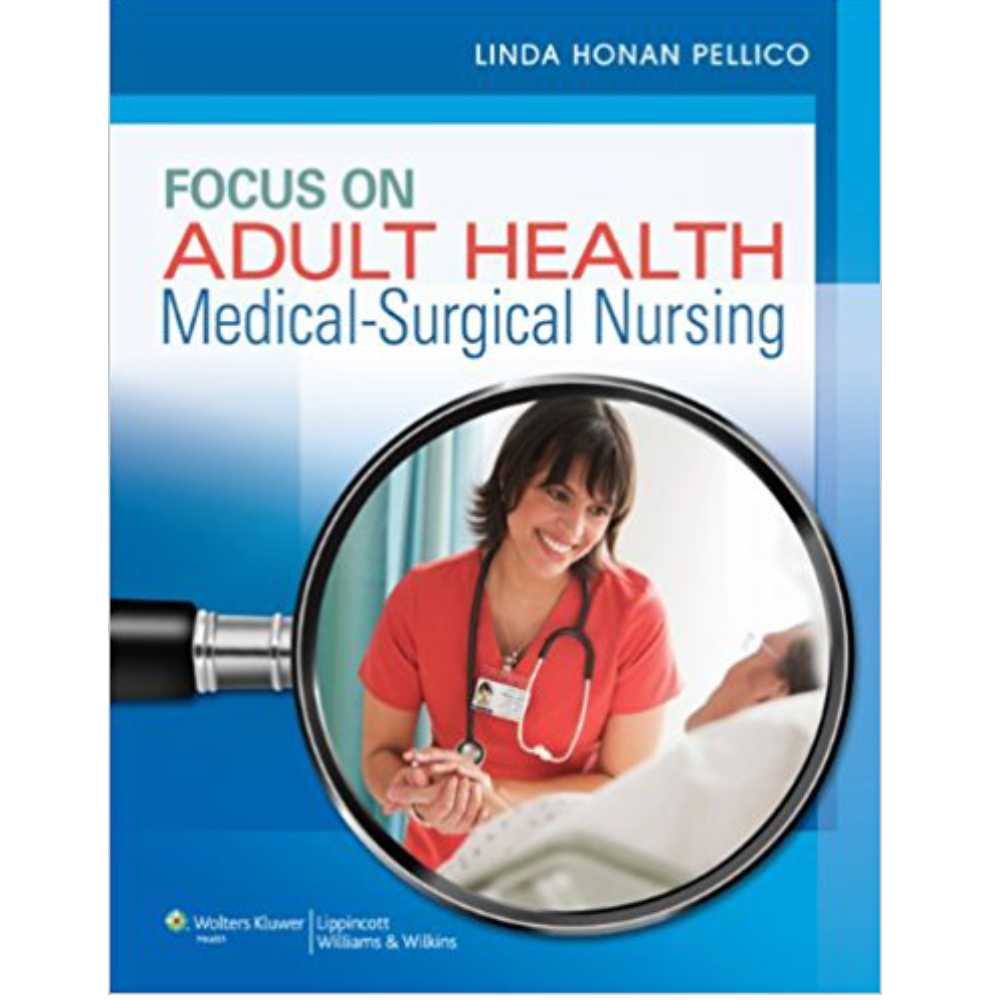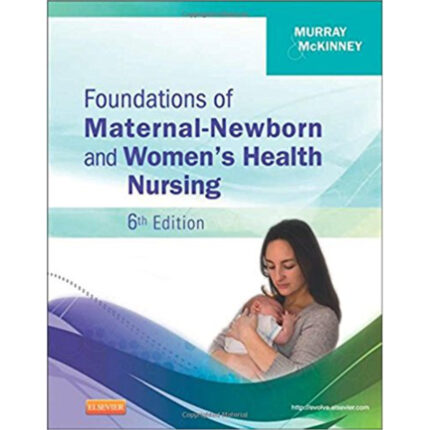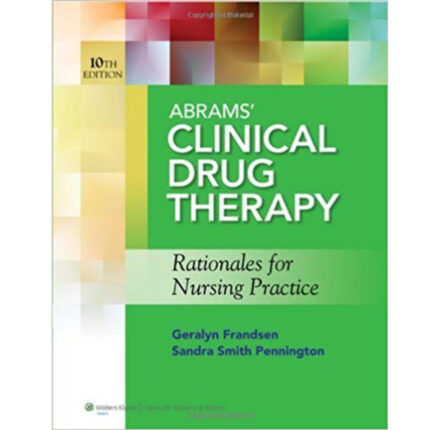Focus On Adult Health Medical Surgical Nursing By Linda – Test Bank
1. The nurse is caring for a 24-year-old patient with an antitrypsin deficiency who states that she has never smoked in her life. An antitrypsin deficiency predisposes the patient to what?
A) Pulmonary edema
B) Emphysema
C) Community-acquired pneumonia
D) Empyema
2. The school nurse is caring for a 10-year-old girl who is having an asthma attack on the school ground at recess. What is the preferred treatment to alleviate this patient’s current airflow obstruction?
A) Corticosteroids
B) Anticholinergics
C) Beta-adrenergics
D) Peak flow monitoring device
3. The nurse is performing an admission assessment of a patient who has a history of asthma. The nurse should be aware that the most common signs of asthma are what?
A) Shallow respirations
B) Increased A-P diameter
C) Bilateral wheezes
D) Rhonchi in the lower bases
4. The patient is having pulmonary function studies performed. The patient has a spirometry test and has a FEV1/FVC ratio of 60%. This finding suggests:
A) Strong exercise tolerance.
B) Exhalation volume is normal.
C) Healthy lung volumes.
D) Obstructive lung disease.
5. The nurse has been asked to give a workshop on chronic obstructive pulmonary disease (COPD) for a local community group. When talking about what can be done for patients with COPD, the nurse encourages a COPD patient not to smoke because smoking has what effect?
A) Increases the amount of mucus production
B) Deoxygenates the hemoglobin
C) Shrinks the alveoli in the lungs
D) Collapses the alveoli in the lungs
6. The nurse is caring for a patient with chronic obstructive pulmonary disease (COPD) and is now performing discharge teaching with this patient. What should the nurse include in the teaching about breathing techniques?
A) Make inhalation longer than exhalation.
B) Exhale through a wide open mouth.
C) Use diaphragmatic breathing.
D) Use chest breathing.
7. The admitting nurse is assessing a patient with chronic obstructive pulmonary disease (COPD). The nurse auscultates diminished breath sounds, which signify changes in the airway. These changes indicate to the nurse the need to monitor the patient for what related signs and symptoms?
A) Hypoxemia and clubbing of the fingers
B) Dyspnea and hypoxemia
C) Clubbing of the fingers and cyanosis
D) Bronchospasm and clubbing of the fingers
8. A student nurse is developing a teaching plan for a patient with chronic obstructive pulmonary disease (COPD). What should the student include as a priority area of teaching?
A) Avoiding extremes of heat and cold
B) Setting and accepting realistic short-term and long-range goals
C) Adopting a lifestyle of moderate activity, ideally in a climate with minimal shifts in temperature and humidity
D) Avoiding emotional disturbances and stressful situations that might trigger a coughing episode
9. The nurse is caring for an asthmatic patient hospitalized with an acute asthma exacerbation. What drugs would the nurse anticipate being ordered for this patient to gain underlying control of persistent asthma?
A) Rescue inhalers
B) Anti-inflammatory drugs
C) Antibiotics
D) Antitussives
10. An asthma educator is teaching a new patient with asthma and his family about the use of a peak flow meter. What does a peak flow meter measure?
A) Highest airflow during a forced inspiration
B) Highest airflow during a forced expiration
C) Highest airflow during a normal inspiration
D) Highest airflow during a normal expiration
Answer Key
1. B
2. C
3. C
4. D
5. A
6. C
7. B
8. B
9. B
10. B












Reviews
There are no reviews yet.